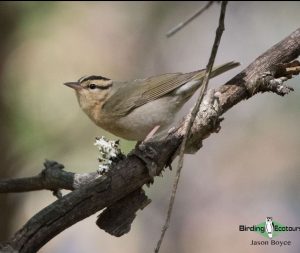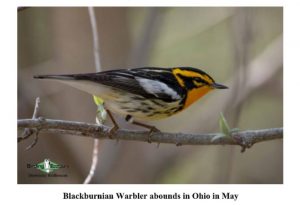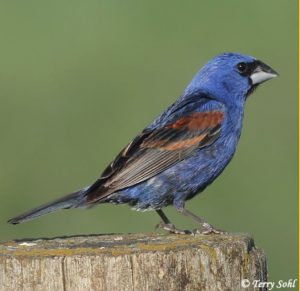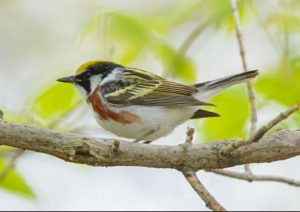Warbler wonderland in May 2020
Golden Gate Bird Alliance is excited to announce a new destination in our Travel with GGBA program: a May 2020 Ohio Warbler Trip. Magee Marsh in Northern Ohio is one of the premier birding spots in North America. Every May, birders flock from around the country to witness its amazing phenomenon of spring migration. We asked Chris Lotz of Birding EcoTours—one of our most popular travel partners—to help us find most of the East Coast warblers and other migrants we don’t have here in the Bay Area. His last Ohio trip saw 196 species and heard another four! Here’s a description of the trip in Chris’s own words.
By Chris Lotz
Northern Ohio is bordered by six-million-acre Lake Erie, creating expansive freshwater marshes. The lake is like a freshwater ocean, with similar effects on migration. In the spring, this creates a jaw-dropping spectacle with Blue Jays and many other species moving along the lakefront in groups of more than 100. As birds migrate north and encounter the huge body of water, they drop into the trees along the shore to rest and feed before attempting to cross the unknown. This creates a massive build-up of extremely tired and hungry birds with one mission—to refuel. The sheer number of exhausted warblers, thrushes, vireos, orioles, tanagers, flycatchers, and more provides birders with eye-level views within 10-20 feet.
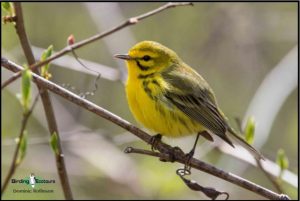
On this tour we have a good chance of finding almost every eastern warbler except for Swainson’s Warbler. We usually see stacks of Blackburnian Warbler, Magnolia Warbler, Chestnut-sided Warbler, Bay-breasted Warbler, Prothonotory Warbler, Cape May Warbler, Black-throated Blue Warbler, Black-throated Green Warbler, American Redstart, Northern Parula, Black-and-white Warbler, etc. These are some of America’s brightest, most beautiful birds. We also expect to see a lot of the duller warblers such as Blackpoll Warbler with its orange legs, Tennessee Warbler, Nashville Warbler, etc.
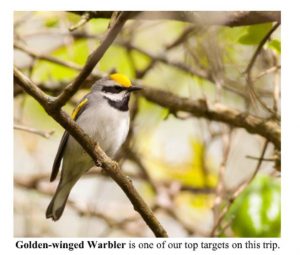
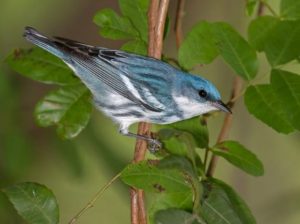
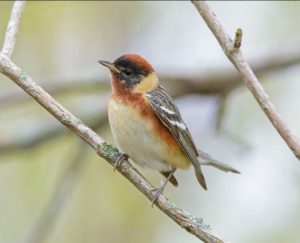
Kirtland’s Warbler – a rare species that nearly went extinct but is now recovering — is easy to miss, but we found it in 2019. The trip is timed to also give us the best chance at less common species like Connecticut Warbler, Mourning Warbler, Canada Warbler.
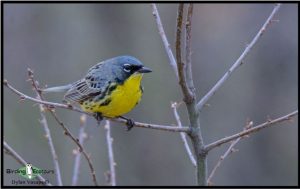
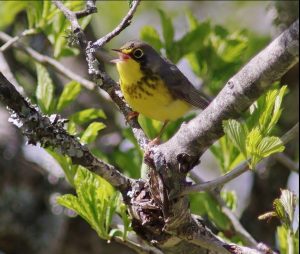
We spend two nights in the hilly south of Ohio on the edge of the Appalachians for some other fantastic warblers including the vulnerable, beautiful Cerulean Warbler, the unusual Worm-eating Warbler, and some dazzling yellow and black ones in the form of Kentucky Warbler and Hooded Warbler. Yellow-breasted Chat is also easiest to find here near the southern state line.
This phenomenon in northern Ohio is unlike any other in the United States. The north also has some fantastic shorebird habitat, which supports tremendous numbers of birds on their journey to breeding grounds in Canada. These beautiful birds are normally molting into their dapper breeding plumages, like Stilt Sandpiper, Short-billed Dowitcher, Wilson’s Phalarope, and upwards of 15 others.
Because different warbler species arrive at different times, some in early May and some in later May, the trip includes two sessions in northwestern Ohio, and in the middle of the trip we go to extreme southern Ohio. This strategy usually enables us to find a greater number of our targets.
Our “Eastern Warblers and Migration Sensation” trip to Ohio will take place from May 8-15, 2020. The cost is $2850 per person for a shared double room. (This assumes a group of 8-9 paying participants.) A single supplement is $690. Click here for a full itinerary or here for a bird list from the 2019 trip. To see all the exciting birding destinations we’re offering in 2020, visit our Travel with GGBA web page.
